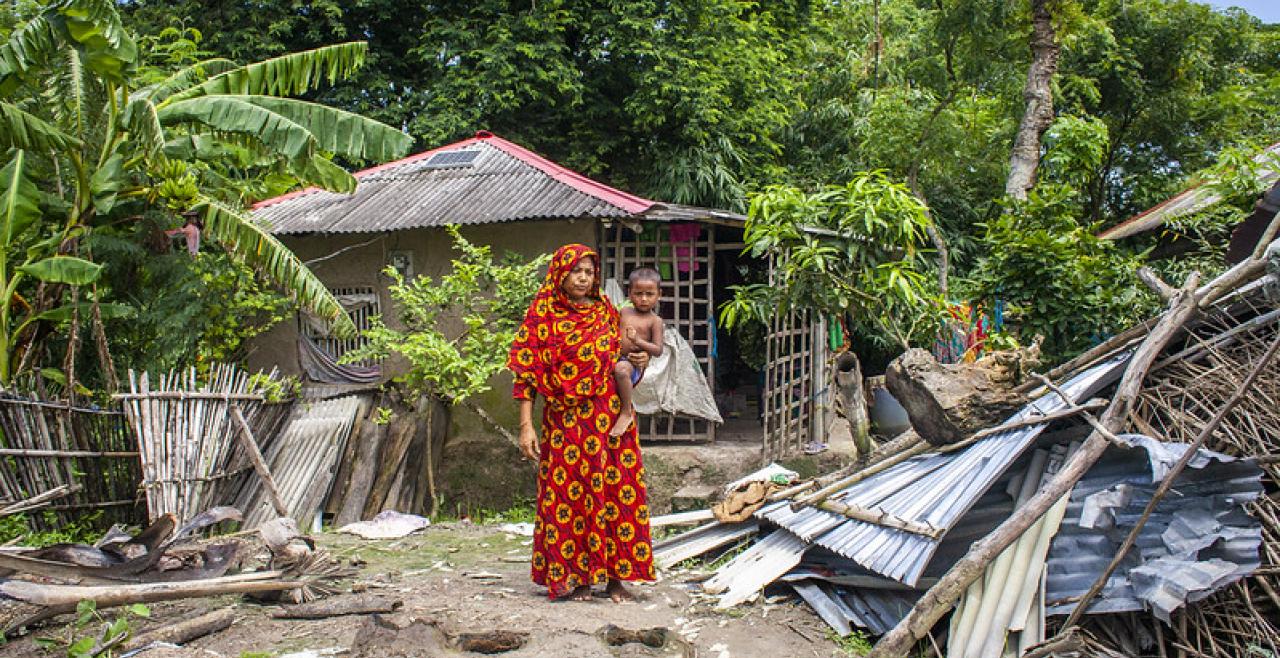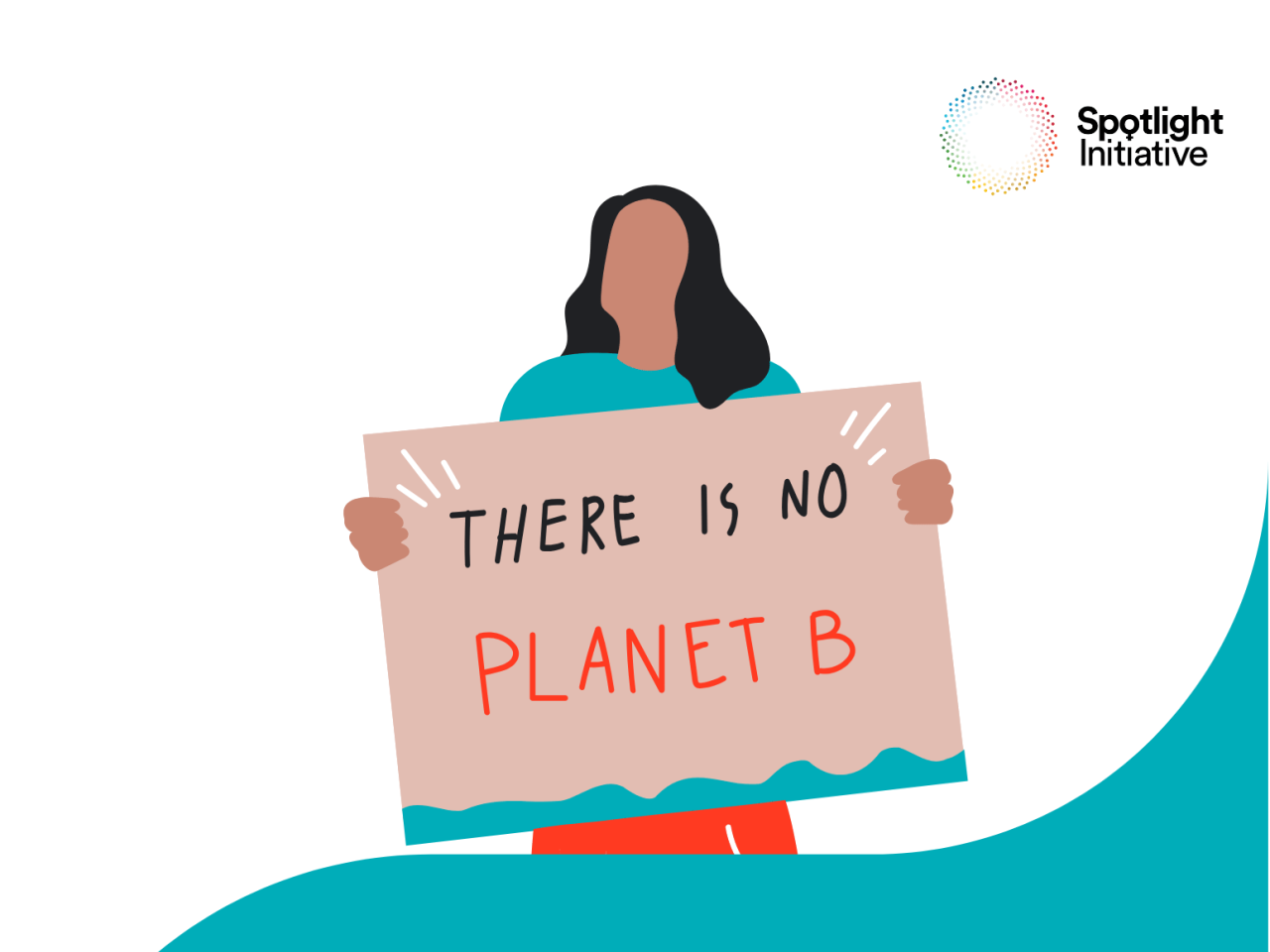Climate change will result in an additional 40 million women and girls experiencing intimate partner violence every year, finds Spotlight Initiative brief

UNITED NATIONS, New York - For decades, feminist organizations and women’s movements have pointed out that climate change exacerbates violence against women and girls, a human rights violation that already affects at least one in three women and girls globally. It is also well known that violence inhibits climate action, threatening women’s and girls’ ability to create change and reducing our collective ability to fight the climate crisis. But these relationships have often been difficult to quantify. A new issue brief from Spotlight Initiative and Dalberg, ‘Colliding Crises: How the Climate Crisis Fuels Gender-based Violence’ uses modelling to show the correlation between these twin crises – and how we can address them simultaneously.
Some of the brief’s key findings below:
1) A 1°C rise in temperature results in an almost a 5 per cent increase in intimate partner violence
By 2090, an additional 40 million women and girls will likely experience intimate partner violence (IPV) each year in a 2°C warming scenario. For context, many predictions say we already exceeded the 1.5°C threshold at the end of 2024. An additional 10 million women and girls will likely experience non-partner sexual violence in the same timespan. In other words, approximately one in ten cases of IPV will be linked to climate change if it continues unabated. Most of this increase is linked to global temperature rise, with early evidence suggesting that every 1°C rise in temperature is associated with a 4.7 per cent rise in IPV. The rest is related to extreme weather events, which are becoming more common.
2) The climate crisis doesn’t cause violence against women – but it does make it worse
Violence against women and girls is the result of unequal gender power dynamics. Extreme climate-related weather events such as droughts, floods and storms exacerbate these dynamics – including by triggering displacement, insecurity, poverty and broader institutional breakdown that can reinforce norms and behaviours that increase violence. For example, violence often spikes in situations of displacement, where multiple families are forced to live together in cramped, shared spaces with inadequate resources. This situation can also confine women and girls with perpetrators of violence, with no or very limited access to emergency shelters. Increases in human trafficking, sexual exploitation and abuse have been documented in the wake of displacement from disasters and slow onset events like desertification, while competition for natural resources has led to violent conflict and displacement, in which rape and sexual violence are used as a strategy to intimidate and exert control.
3) The climate crisis makes existing gender-based violence more extreme
Climate change worsens the severity of violence as well as increasing its prevalence, putting more than one billion women and girls who already experience violence at even greater risk. One study found that women and girls who had already experienced intimate partner violence experienced more frequent and severe forms of IPV with warming temperatures. This raises the risk of the most extreme forms of violence such as femicide, sexual exploitation, child marriage and rape as a weapon of war. Another study found that intimate partner femicide rose by as much as 28 per cent during heat waves.
4) The climate crisis reduces our ability to fight both environmental degradation and violence against women and girls
Climate change can create environmental conditions that damage or disrupt schooling, health services, public services and infrastructure, transportation, social services and local government. This not only disrupts programming to prevent violence, it also reduces access to vital communication networks, frontline service providers, shelters and helplines that enable survivors to seek help.
At the same time, violence against women is making it harder for women and girls to participate in and lead climate action. Women environmental human rights defenders, many of whom belong to Indigenous communities, are at particular risk of targeted violence as they speak up to address the climate crisis. Advocacy for land rights, natural resource protection and gender responsive climate transition put these advocates in danger of harassment, doxing, defamation, sexual violence, physical attack and femicide. Violence can come from within their own communities, such as in Guatemala where women who reported logging activities to local authorities were forcibly evicted by their neighbours and had their homes burned down. It can also come from well-resourced corporate or institutional actors, state actors or collusion between the two.
5) Addressing violence against women and girls can help us achieve climate justice and vice versa
Ending violence against women and girls and curbing climate change are not competing but mutually reinforcing agendas. Women’s full participation in political processes – including in climate action – has known benefits across climate mitigation, adaptation and resilience and a just transition. More gender-balanced parliaments, for example, have passed more stringent policies to lower carbon dioxide emissions. However, gender-based violence and climate actors need to work together far more than they do today. Increased funding and political commitment are needed for climate mitigation, adaptation and resilience, as well as for ending violence against women and girls.
Find out more about Spotlight Initiative’s programmatic work on preventing violence and advocating for gender-sensitive climate action in the full brief, ‘Colliding Crises: How the Climate Crisis Fuels Gender-based Violence’.

